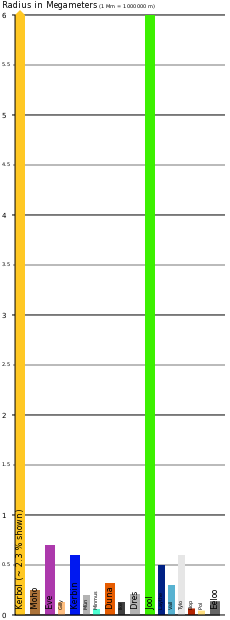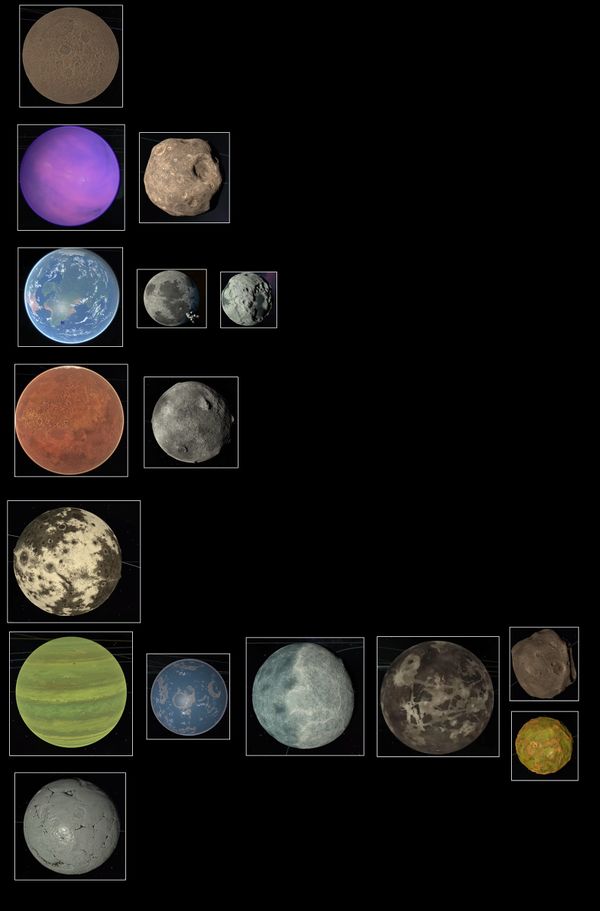Difference between revisions of "Kerbol System"
From Kerbal Space Program Wiki
(the whole section seems confused, it's conflating real world and KSP notions. there's no mystery; KSP just doesn't have the astrophysical phenomena that one would call an "edge" of a solar system, Kerbol is a point mass) |
IndigoLily (talk | contribs) m (Made Mercury and Ceres links point to the correct celestial body page instead of disambiguation) |
||
| Line 21: | Line 21: | ||
| [[Kerbol]] || [[w:Sun|Sun]] | | [[Kerbol]] || [[w:Sun|Sun]] | ||
|- | |- | ||
| − | | [[Moho]] || [[w: | + | | [[Moho]] || [[w:Mercury_(planet)|Mercury]] |
|- | |- | ||
| [[Eve]] || [[w:Venus|Venus]] | | [[Eve]] || [[w:Venus|Venus]] | ||
| Line 29: | Line 29: | ||
| [[Duna]] || [[w:Mars|Mars]] | | [[Duna]] || [[w:Mars|Mars]] | ||
|- | |- | ||
| − | | [[Dres]] || [[w: | + | | [[Dres]] || [[w:Ceres_(dwarf_planet)|Ceres]] |
|- | |- | ||
| [[Jool]] || [[w:Jupiter|Jupiter]] | | [[Jool]] || [[w:Jupiter|Jupiter]] | ||
Latest revision as of 18:06, 16 September 2024
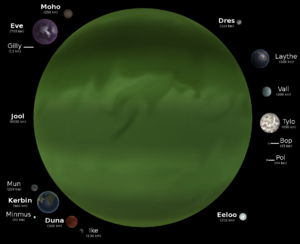
All celestial bodies orbiting Kerbol with the sizes to scale
The Kerbol System is the planetary system in which Kerbal Space Program takes place, as well as the first explorable planetary system in Kerbal Space Program 2. It has Kerbol as the central body which is orbited by 5 planets and 2 dwarf planets. Only Kerbin and Laythe have an oxygen atmosphere and only Kerbin hosts life.
With the outermost dwarf planet Eeloo it reaches up to 113 549 713 200 m (about 113.5 Gm or 0.76 AU) out into space. Compared to our Solar System it is a very small system, as Earth's periapsis (or more specific perihelion) is about 147 Gm (or 0.98 AU) and thus outside of Eeloo's orbit.
Old System in KSP1
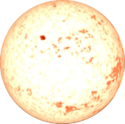 Kerbol Kerbol
| ||||||
 Moho Moho
| ||||||
 Eve Eve
|
 Gilly Gilly
| |||||
 Kerbin Kerbin
|
 Mun Mun
|
 Minmus Minmus
| ||||
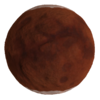 Duna Duna
|
 Ike Ike
| |||||
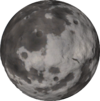 Dres Dres
| ||||||
 Jool Jool
|
 Laythe Laythe
|
 Vall Vall
|
 Tylo Tylo
|
 Bop Bop
|
 Pol Pol
|
|
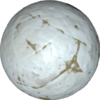 Eeloo Eeloo
| ||||||
| (Sizes and distances not to scale) | ||||||
Relation to the Solar System
| Kerbol system | Solar system |
|---|---|
| Kerbol | Sun |
| Moho | Mercury |
| Eve | Venus |
| Kerbin | Earth |
| Duna | Mars |
| Dres | Ceres |
| Jool | Jupiter |
| Eeloo | Pluto |
Planet from the Kerbol System are defined from a few characteristics:
| Characteristic | How the value was chosen |
|---|---|
| gravity at sea level | hand-picked, followed by a conversion from single to double precision (e.g. gravity on Eve is 1.70000004768372g instead of 1.7g) |
| radius | hand-picked, loosely a tenth the radius of its solar counterpart for Moho, Eve, Kerbin, Duna and Jool |
| rotational period | hand-picked or tidally locked, except Kerbin (21599.91201454015) and Duna (65517.859375) |
| orbit semi-major axis | an eleventh the one from its solar counterpart, except for Eeloo, computed in single precision floating point arithmetic |
| eccentricity | hand-picked, close to solar one for Moho, Jool and Eeloo |
| mean anomaly at epoch | hand-picked (radians), often 3.14 |
| inclination | hand-picked (degrees), close to solar one for Moho and Eve |
| longitude of ascending node | hand-picked (degrees) |
| argument of periapsis | hand-picked (degrees) |
See also
- Kerbol System/Table for a table of all objects

